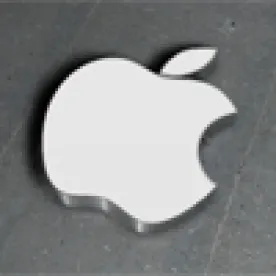The US Court of Appeals for the Federal Circuit reiterated that the relevant inquiry and factual findings required to support a conclusion that claims recite mean-plus-function terms is evidentiary support by the challenger that a contested claim term fails to recite structure. Zeroclick, LLC v. Apple, Inc., Case No. 891 F.3d 1003 (Fed. Cir., June 1, 2018) (Hughes, J).
Zeroclick sued Apple for allegedly infringing patent claims related to graphical user interfaces (GUIs) and modifications that allow the GUIs to be controlled using predefined pointer or touch movements. Apple counterclaimed that the asserted claims were invalid. The district court agreed, finding the claims invalid for indefiniteness, as reciting means-plus-function limitations for which the specification(s) did not disclose sufficient structure.
Zeroclick appealed, arguing that the district court erred in construing claim terms as means-plus-function limitations. After de novo review of the claim construction, whether the claim language invoked § 112(6), post-AIA § 112(f) and any indefiniteness, the Federal Circuit reversed the district court’s judgment and remanded for further proceedings.
Federal Circuit precedent recognizes “the importance of the presence or absence of the word ‘means’” to determine whether § 112, ¶ 6 applies to a claim limitation. Williamson (IP Update, Vol. 18, No. 6). While failure to use “means” creates a rebuttable presumption that § 112, ¶ 6 does not apply, the presumption can be overcome and § 112, ¶ 6 will apply “if the challenger demonstrates that the claim term fails to recite sufficiently definite structure or else recites function without reciting sufficient structure for performing that function.” Under a preponderance of the evidence standard, “the essential inquiry remains ‘whether the words of the claim are understood by persons of ordinary skill in the art to have a sufficiently definite meaning as the name for structure,’” i.e., “a reasonably well understood meaning in the art.” Following traditional claim construction principles, the § 112, ¶ 6 determination must be made on an element-by-element basis in light of evidence intrinsic and extrinsic to the asserted patent, including an analysis of the patent and its prosecution history.
Here, the district court failed to undertake such an inquiry and make related factual findings. Although none of the limitations at issue used the word “means,” Apple provided no evidentiary support for its position that the limitations should nonetheless be construed under § 112, ¶ 6, and thus the presumption against applying § 112, ¶ 6 remained unrebutted. The Federal Circuit considered the district court’s discussion, finding it “couched in conclusory language” that contrasted and relied on Apple’s arguments against Zeroclick’s contentions, but “pointed to no record evidence” supporting Apple’s contention that § 112, ¶ 6 applied.
The Federal Circuit thus found the district court’s treatment of the claim terms “program” and “user interface code” as nonce words (substituting for “means” to presumptively bring the disputed limitations under § 112, ¶ 6) erroneous for at least three related reasons:
-
“[T]he mere fact that the disputed limitations incorporate functional languages does not automatically convert the words into means for performing such functions.”
-
The analysis “removed the terms from their context, which otherwise strongly suggests the plain and ordinary meaning of the terms,” despite a person of ordinary skill in the art being able to “reasonably discern from the claim language” that “program” and “user interface code” were used “not as generic terms or black box recitations of structure or abstractions, but rather as specific references to conventional [GUIs] or code, existing in prior art at the time of the inventions.”
-
“[T]he district court made no pertinent finding [compelling] the conclusion that a conventional [GUI] program or code is used in common parlance as substitute for ‘means.’”



 />i
/>i

